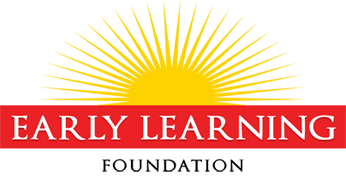Our Commitment to Early Childhood Learning Success
Our Commitment to Early Childhood Learning Success
It is predictable. Our commitment to early childhood learning success will continue to produce mediocre results. Despite a greater awareness of the importance of early learning success, we still offer preschool and K-3 programs that are substantially the same as the programs which have led to present outcomes. And present programs are not working.
By the beginning of fourth grade, the point at which we can accurately predict long-term learning outcomes, only 33 percent of American children are at proficient reading levels. Only 17 percent of children who are eligible for free or reduced lunch are at proficient reading levels. The vast majority of the non-proficient fourth grade readers are unlikely to ever become good readers, love to learn, go on to advanced education, or become learners for life. Yet change is possible.
The early childhood learning years are similar to the launching phase of an aircraft. Whenever I choose to fly, I act on the assumption that a specific sequence of checks have occurred. In a small aircraft the checklist might include: Flight controls- Free and correct; Instruments and radios- Checked and set; Landing gear position lights- Checked; Altimeter- Set; Directional gyro- Set; Fuel gauges- Checked; Trim- Set; Propeller- Checked; Magnetos- Checked; Engine idle- checked; Flaps- As required; Seat belts/shoulder harnesses- Fastened; Parking brake- Off.
When parents send their children off to school, they probably also act on the assumption that someone is carefully delivering the instruction that will allow their children to develop the skills needed for successful takeoff. But they are wrong.
At a time in which it has never been more important to be capable of learning for life, schools skip the checklist for readiness. Oral language skills- Not good; Letter recognition- OK; Number sense- Not really checked; Visual motor skills- Did not have time to check; Gross motor skills- Not my job; Self-regulation- What’s that?; Behavior and Social Skills- These kids drive me crazy; Self-care skills- You’ve got to be kidding!
Schools have not yet learned to use systematic measurement of progress toward essential outcomes. Amazingly they don’t even try. Schools were designed to deliver content, test kids, give grades, allow less successful learners to choose to leave for other pursuits. We’ve increased the quantity of content (way too much). We argue about the list of standards that we should “cover” (a largely worthless debate). We push forward with the delivery of content whether students are successful or not, without assuring that key competencies are achieved. Then we wonder and complain when students disengage from learning.
In a January, 2013 Wall Street Journal article, Bill Gates argued for the power of systematic measurement of progress:
“Setting clear goals, choosing an approach, measuring results, and then using those measurements to continually refine our approach—helps us to deliver tools and services to everybody who will benefit, be they students in the U.S. or mothers in Africa.”
A poor rural school in Mississippi began implementation of systematic assessment toward essential early learning outcomes in 2008-09. Using the Essential Skill Inventories they learned to:
Clearly identify essential learning outcomes
Use systematic measurement to determine the readiness levels of your students in relation to essential outcomes
Offer responsive instruction until these skills/objectives are deeply understood
Monitor progress until all essential learning is accomplished
Allow students to move on to more advanced learning as soon as they are ready
In their first years of implementation at Simpson Central School, teachers reported struggling with knowing how to embed assessment opportunities into instructional design, and questioned their ability to use observational assessment to help measure progress. They had difficulty staying on the schedule for updating their classroom skills inventory. Some teachers reported that “covering lessons” was more comfortable than planning instruction around the complex learning needs of their students. But with good leadership, they persisted.
Mississippi Curriculum Test 2, Grade 3 Language Arts, Simpson County Central School, 2008 to 2013, Percent of Students in Category
Mississippi Curriculum Test 2, Grade 3 Mathematics, Simpson County Central School, 2008 to 2013, Percent of Students in Category
In one of the poorest and historically lowest performing parts of this country teachers have learned to identify essential learning and behavior outcomes, and are systematically measuring progress towards these outcomes. Teachers are more effective assessing progress, planning instruction, differentiating instruction, and responding to the development of the whole child. The percentage of third grade students scoring proficient and above in Language Arts has more than doubled. More than 80% of students are fully proficient or better in Mathematics.
Systematic measurement of progress is a departure from standard practice in American schools. By identifying the skills and behaviors crucial for school success we can ensure that for these outcomes teachers don’t just cover them and then move on.
The checklist for early learning success can be as precisely defined as the checklist for aircraft take-off. Essential early learning skills deserve all the time needed for every child to build proficiency.
Bob Sornson, Ph.D. is the founder of the Early Learning Foundation. His implementation of programs and strategies for early learning success, the Early Learning Success Initiative, serves as a model for districts around the country. He is committed to the belief that practically every child can have a successful early learning experience. Dr. Sornson can be contacted at bob@earlylearningfoundation.com.
